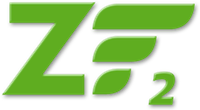Zend\Feed and Security¶
Introduction¶
As with any data coming from a source that is beyond the developer’s control, special attention needs to be given to securing, validating and filtering that data. Similar to data input to our application by users, data coming from RSS and Atom feeds should also be considered unsafe and potentially dangerous, as it allows the delivery of HTML and xHTML [1]. Because data validation and filtration is out of Zend\Feed‘s scope, this task is left for implementation by the developer, by using libraries such as Zend\Escaper for escaping and HTMLPurifier for validating and filtering feed data.
Escaping and filtering of potentially insecure data is highly recommended before outputting it anywhere in our application or before storing that data in some storage engine (be it a simple file, a database...).
Filtering data using HTMLPurifier¶
Currently the best available library for filtering and validating (x)HTML data in PHP is HTMLPurifier and, as such, is the recommended tool for this task. HTMLPurifier works by filtering out all (x)HTML from the data, except for the tags and attributes specifically allowed in a whitelist, and by checking and fixing nesting of tags, ensuring a standards-compliant output.
The following examples will show a basic usage of HTMLPurifier, but developers are urged to go through and read HTMLPurifier’s documentation.
1 2 3 4 5 6 7 8 9 10 11 12 13 14 15 16 17 18 19 20 21 22 23 24 25 26 27 28 29 30 31 32 33 34 35 36 37 38 39 40 41 42 43 44 45 46 47 48 49 50 51 52 53 54 55 56 57 58 59 60 61 | // Setting HTMLPurifier's options
$options = array(
// Allow only paragraph tags
// and anchor tags wit the href attribute
array(
'HTML.Allowed',
'p,a[href]'
),
// Format end output with Tidy
array(
'Output.TidyFormat',
true
),
// Assume XHTML 1.0 Strict Doctype
array(
'HTML.Doctype',
'XHTML 1.0 Strict'
),
// Disable cache, but see note after the example
array(
'Cache.DefinitionImpl',
null
)
);
// Configuring HTMLPurifier
$config = HTMLPurifier_Config::createDefault();
foreach ($options as $option) {
$config->set($option[0], $option[1]);
}
// Creating a HTMLPurifier with it's config
$purifier = new HTMLPurifier($config);
// Fetch the RSS
try {
$rss = Zend\Feed\Reader\Reader::import('http://www.planet-php.net/rss/');
} catch (Zend\Feed\Exception\Reader\RuntimeException $e) {
// feed import failed
echo "Exception caught importing feed: {$e->getMessage()}\n";
exit;
}
// Initialize the channel data array
// See that we're cleaning the description with HTMLPurifier
$channel = array(
'title' => $rss->getTitle(),
'link' => $rss->getLink(),
'description' => $purifier->purify($rss->getDescription()),
'items' => array()
);
// Loop over each channel item and store relevant data
// See that we're cleaning the descriptions with HTMLPurifier
foreach ($rss as $item) {
$channel['items'][] = array(
'title' => $item->getTitle(),
'link' => $item->getLink(),
'description' => $purifier->purify($item->getDescription())
);
}
|
Note
HTMLPurifier is using the PHP Tidy extension to clean and repair the final output. If this extension is not available, it will silently fail but its availability has no impact on the library’s security.
Note
For the sake of this example, the HTMLPurifier’s cache is disabled, but it is recommended to configure caching and use its standalone include file as it can improve the performance of HTMLPurifier substantially.
Escaping data using Zend\Escaper¶
To help prevent XSS attacks, Zend Framework has a new component Zend\Escaper, which complies to the current OWASP recommendations, and as such, is the recommended tool for escaping HTML tags and attributes, Javascript, CSS and URLs before outputing any potentially insecure data to the users.
1 2 3 4 5 6 7 8 9 10 11 12 13 14 15 16 17 18 19 20 21 22 23 24 25 26 27 28 29 30 31 32 33 34 35 36 37 38 | try {
$rss = Zend\Feed\Reader\Reader::import('http://www.planet-php.net/rss/');
} catch (Zend\Feed\Exception\Reader\RuntimeException $e) {
// feed import failed
echo "Exception caught importing feed: {$e->getMessage()}\n";
exit;
}
// Validate all URIs
$linkValidator = new Zend\Validator\Uri;
$link = null;
if ($linkValidator->isValid($rss->getLink())) {
$link = $rss->getLink();
}
// Escaper used for escaping data
$escaper = new Zend\Escaper\Escaper('utf-8');
// Initialize the channel data array
$channel = array(
'title' => $escaper->escapeHtml($rss->getTitle()),
'link' => $escaper->escapeHtml($link),
'description' => $escaper->escapeHtml($rss->getDescription()),
'items' => array()
);
// Loop over each channel item and store relevant data
foreach ($rss as $item) {
$link = null;
if ($linkValidator->isValid($rss->getLink())) {
$link = $item->getLink();
}
$channel['items'][] = array(
'title' => $escaper->escapeHtml($item->getTitle()),
'link' => $escaper->escapeHtml($link),
'description' => $escaper->escapeHtml($item->getDescription())
);
}
|
The feed data is now safe for output to HTML templates. You can, of course, skip escaping when simply storing the data persistently but remember to escape it on output later!
Of course, these are just basic examples, and cannot cover all possible scenarios that you, as a developer, can, and most likely will, encounter. Your responsibility is to learn what libraries and tools are at your disposal, and when and how to use them to secure your web applications.
Footnotes
| [1] | http://tools.ietf.org/html/rfc4287#section-8.1 |

